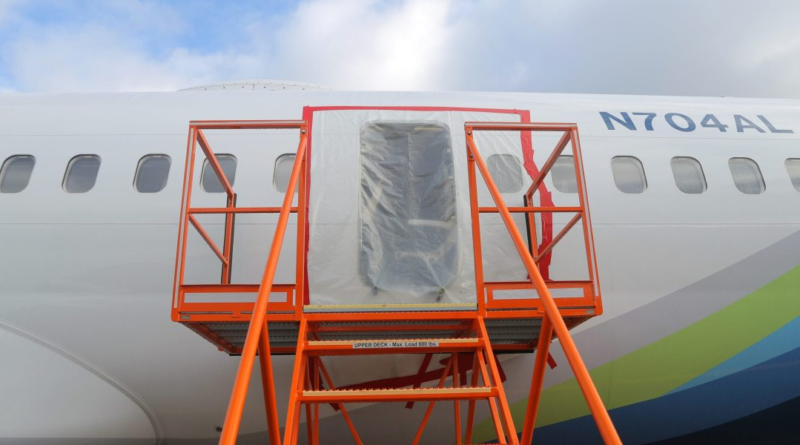Another Boeing 737 model should be inspected for problems with the kind of door plug that blew out on Alaska Airlines, FAA says
Scrutiny of Boeing Co.’s manufacturing quality expanded after federal regulators told airlines to check the door plugs on a second 737 model, where operators have also found issues with fasteners.
The US Federal Aviation Administration recommended that airlines inspect 737-900ER models that use mid-aft plugs of the same type that failed on an Alaska Airlines flight this month. The 737-900ER is an earlier model than the Max 9 used on Flight 1282 on Jan. 5.
Shares of Boeing fell 2.3% as of 5:37 a.m. New York time in premarket US trading. The stock had fallen 18% this year through Friday, the worst performance among members of the Dow Jones Industrial Average.
According to Boeing data, 505 of the 737-900ER type of planes have been delivered to airlines globally. Not all utilize the door plugs, as their use is dependent on airlines’ seat configurations.
The move will offer an “added level of safety,” the FAA said in a statement late Sunday. It recommended airlines make visual inspections of the plugs “to ensure the door is properly secured.” Some 737-900ER operators have “noted findings with bolts” during inspections, the FAA said separately.
Manufacturing quality at Boeing is undergoing a deep dissection by regulators, customers and the planemaker itself in the wake of the Flight 1282 blowout. A plug covering a door-sized gap in the frame tore off at 16,000 feet, exposing passengers to potentially being sucked out of the aircraft. While the plane landed safely, the FAA grounded 171 Max 9 jets.
The safety regulator has since launched a probe into Boeing quality, and said it would increase its oversight of production and manufacturing. Airlines from Alaska Air Group Inc. to Ryanair Holdings Plc have also said they’ll add inspectors at Boeing plants. Boeing said in a statement that it “fully supports the FAA and our customers in this action.”
The major operators of the 900ER include United Airlines Holdings Inc., Alaska Airlines and Delta Air Lines Inc. Others include Korean Air, Indonesia’s Lion Air, and El Al.
United, which has 136 737-900ERs in its fleet, said it started “proactive inspections” earlier this week, and expects them to be completed in the next few days. Meanwhile, its Max 9s will continue to be grounded through Friday.
Delta had 163 of the 900ER jets in its fleet as of September last year. It said in a statement that it planned to undergo inspections and it didn’t anticipate any operational impact.
Inspections of the Max 9 plug door can take up to eight hours and the visual checks required by the FAA for the 900ER are specific to four locations where a bolt, nut and pin installation is used to secure the door to the airframe. The detail of the work suggests stripping back the door plug to its bare frame to undertake the checks. Most airlines so far have stressed no impact on flights relating to the new measures.
Prior to the Alaska Air incident, federal regulators had already stepped up oversight of Boeing since a pair of 737 Max crashes in 2018 and 2019 killed 346 passengers and crew. FAA inspectors are required to sign off on every 737 and 787 prior to delivery, work it had previously delegated to employees of the planemaker.
Last year, Boeing had separate issues with loose or missing bolts on 737 rudder-control systems, installation of vertical tail fins and mis-drilled holes in the aft pressure bulkheads.




